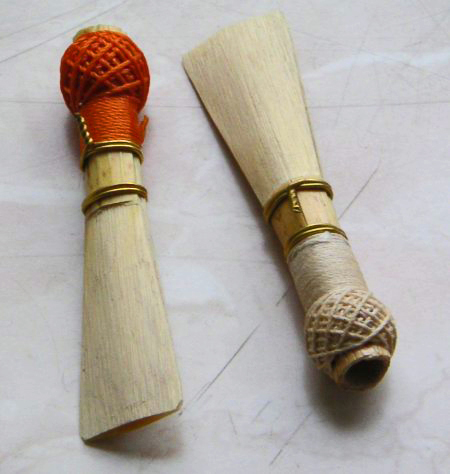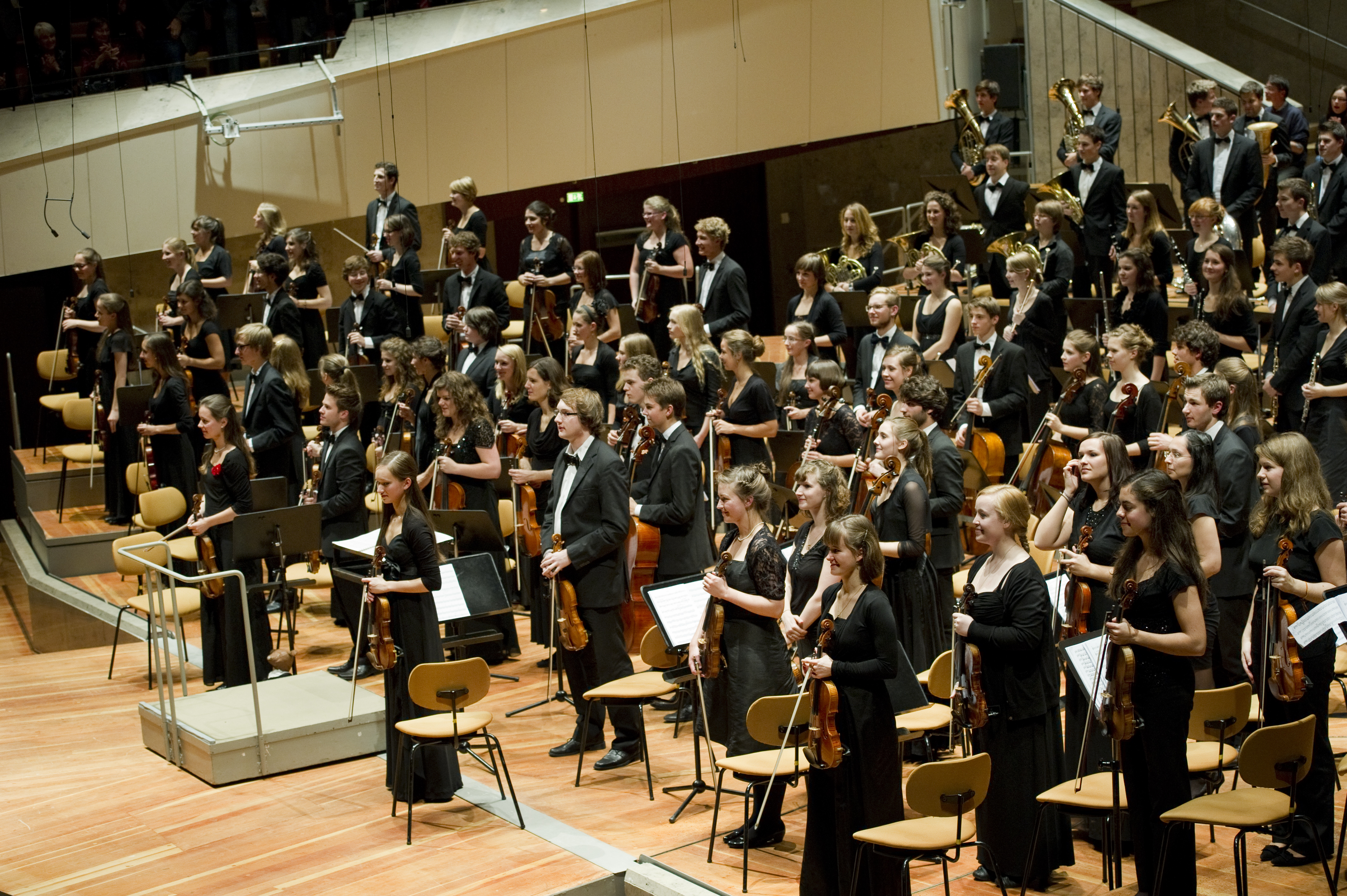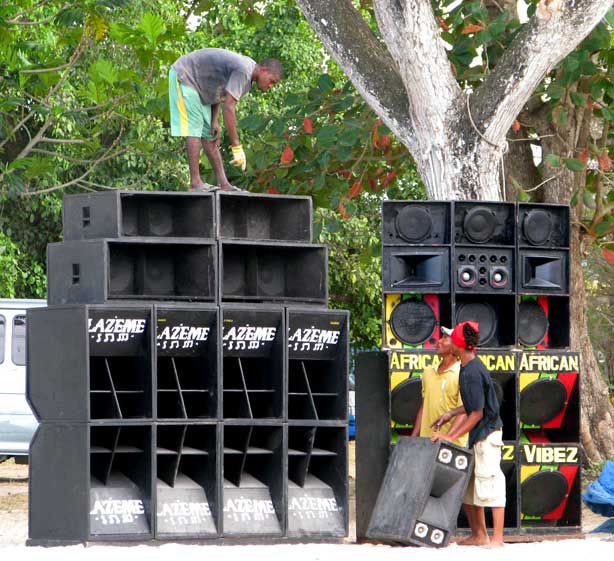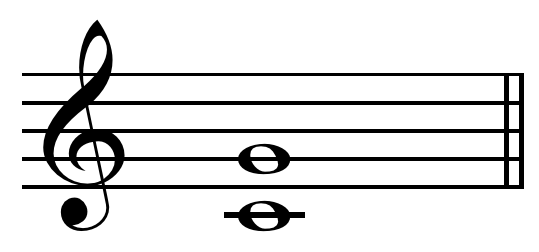|
Bayan (accordion)
The bayan ( rus, бая́н, p=bɐˈjan) is a type of chromatic button accordion developed in the Russian Empire in the early 20th century and named after the 11th-century bard Boyan. Characteristics The bayan differs from western chromatic button accordions in some details of construction: * Reeds are broader and rectangular (rather than trapezoidal). * Reeds are often attached in large groups to a common plate (rather than in pairs); the plates are screwed to the reed block (rather than attached with wax). * The melody-side keyboard is attached near the middle of the body (rather than at the rear). * Reeds are generally not tuned with tremolo. * Register switches may be operated with the chin on some larger models (also possible with some larger European button accordions). * The diminished chord row is shifted, so that the diminished G chord is where one would expect the diminished C chord in the Stradella bass system. * Converter switches that go from standard preset ... [...More Info...] [...Related Items...] OR: [Wikipedia] [Google] [Baidu] |
Free-reed Aerophone
A free reed aerophone is a musical instrument that produces sound as air flows past a vibrating reed in a frame. Air pressure is typically generated by breath or with a bellows. In the Hornbostel–Sachs system, it is number 412.13 (a member of interruptive free aerophones). Free reed instruments are contrasted with non-free or enclosed reed instruments, where the timbre is fully or partially dependent on the shape of the instrument body, Hornbostel–Sachs number: 42 (flute, reed, and brass). Operation The following illustrations depict the type of reed typical of harmonicas, pitch pipes, accordions, and reed organs as it goes through a cycle of vibration. One side of the reed frame is omitted from the images for clarity; in reality, the frame completely encloses the reed. Airflow over one side of the reed (labeled “AR”) creates a region of low pressure on that side (see the Bernoulli's principle article for details), causing the reed to flex towards the low-pressure side. ... [...More Info...] [...Related Items...] OR: [Wikipedia] [Google] [Baidu] |
Reed (music)
A reed (or lamella) is a thin strip of material that vibrates to produce a sound on a musical instrument. Most woodwind instrument reeds are made from '' Arundo donax'' ("Giant cane") or synthetic material. Tuned reeds (as in harmonicas and accordions) are made of metal or synthetics. Musical instruments are classified according to the type and number of reeds. The earliest types of single-reed instruments used idioglottal reeds, where the vibrating reed is a tongue cut and shaped on the tube of cane. Much later, single-reed instruments started using heteroglottal reeds, where a reed is cut and separated from the tube of cane and attached to a mouthpiece of some sort. By contrast, in an uncapped double reed instrument (such as the oboe and bassoon), there is no mouthpiece; the two parts of the reed vibrate against one another. Single reeds Single reeds are used on the mouthpieces of clarinets and saxophones. The back of the reed is flat and is placed against the mouthpiece. ... [...More Info...] [...Related Items...] OR: [Wikipedia] [Google] [Baidu] |
Vladislav Zolotaryov
Vladislav Andreyevich Zolotaryov (, De-Kastri, September 13, 1942 – Moscow, May 13, 1975) was a Soviet composer and bayanist. He is regarded as one of the greatest Soviet composers for bayan. He graduated from the class of N. A. Lesnoi (bayan) at the Magadan Secondary School of Music in 1968, and studied composition under the guidance of R. K. Shchedrin (by way of consultation, 1968–1969), and with T. N. Khrennikov (at the Moscow Conservatoire, 1971–1972). He composed large-scale and chamber compositions, string quartets and vocal music, but is best known for his works for bayan (button accordion). Friedrich Lips and A. Surkov wrote in ''Anthology of Compositions for Button Accordion'': "The creative work of Vl. Zolotaryov can be described as a milestone of the utmost importance for the incontestable progress of accordion music. . . . In his ''Partita'' (1968), ''Six Children's Suites'' (1969/74), his ''Sonata N° 2'' (1971) and ''Sonata No. 3'' (1972), and ''Five Compos ... [...More Info...] [...Related Items...] OR: [Wikipedia] [Google] [Baidu] |
Contemporary Classical Music
Contemporary classical music is Western art music composed close to the present day. At the beginning of the 21st-century classical music, 21st century, it commonly referred to the post-1945 Modernism (music), post-tonal music after the death of Anton Webern, and included serial music, electronic music, experimental music, and minimalist music. Newer forms of music include spectral music and ''Postminimalism#Music, post-minimalism''. History Background At the beginning of the 20th century, composers of classical music were experimenting with an increasingly Consonance and dissonance, dissonant pitch language, which sometimes yielded atonality, atonal pieces. Following World War I, as a backlash against what they saw as the increasingly exaggerated gestures and formlessness of late Romanticism, certain composers adopted a Neoclassicism (music), neoclassic style, which sought to recapture the balanced forms and clearly perceptible thematic processes of earlier styles (see als ... [...More Info...] [...Related Items...] OR: [Wikipedia] [Google] [Baidu] |
European Classical Music
Classical music generally refers to the art music of the Western world, considered to be #Relationship to other music traditions, distinct from Western folk music or popular music traditions. It is sometimes distinguished as Western classical music, as the term "classical music" can also be applied to List of classical and art music traditions, non-Western art musics. Classical music is often characterized by formality and complexity in its musical form and Harmony, harmonic organization, particularly with the use of polyphony. Since at least the ninth century, it has been primarily a written tradition, spawning a sophisticated music notation, notational system, as well as accompanying literature in music analysis, analytical, music criticism, critical, Music history, historiographical, musicology, musicological and Philosophy of music, philosophical practices. A foundational component of Western culture, classical music is frequently seen from the perspective of individual or com ... [...More Info...] [...Related Items...] OR: [Wikipedia] [Google] [Baidu] |
Bass (sound)
Bass ( ) (also called bottom end) describes tones of low (also called "deep") frequency, pitch and range from 16 to 250 Hz (C0 to middle C4) and bass instruments that produce tones in the low-pitched range C2-C4. They belong to different families of instruments and can cover a wide range of musical roles. Since producing low pitches usually requires a long air column or string, and for stringed instruments, a large hollow body, the string and wind bass instruments are usually the largest instruments in their families or instrument classes. Musical role When bass notes are played in a musical ensemble such an orchestra, they are frequently used to provide a counterpoint or counter-melody, in a harmonic context either to outline or juxtapose the progression of the chords, or with percussion to underline the rhythm. Rhythm section In popular music, the bass part, which is called the "bassline", typically provides harmonic and rhythmic support to the band. The bass playe ... [...More Info...] [...Related Items...] OR: [Wikipedia] [Google] [Baidu] |
Tone Color
In music, timbre (), also known as tone color or tone quality (from psychoacoustics), is the perceived sound of a musical note, sound or musical tone, tone. Timbre distinguishes sounds according to their source, such as choir voices and musical instruments. It also enables listeners to distinguish instruments in the same category (e.g., an oboe and a clarinet, both Woodwind instrument, woodwinds). In simple terms, timbre is what makes a particular musical instrument or human voice have a different sound from another, even when they play or sing the same note. For instance, it is the difference in sound between a guitar and a piano playing the same note at the same volume. Both instruments can sound equally tuned in relation to each other as they play the same note, and while playing at the same amplitude level each instrument will still sound distinctive with its own unique tone color. Musicians distinguish instruments based on their varied timbres, even instruments playing not ... [...More Info...] [...Related Items...] OR: [Wikipedia] [Google] [Baidu] |
Perfect Fifth
In music theory, a perfect fifth is the Interval (music), musical interval corresponding to a pair of pitch (music), pitches with a frequency ratio of 3:2, or very nearly so. In classical music from Western culture, a fifth is the interval from the first to the last of the first five consecutive Musical note, notes in a diatonic scale. The perfect fifth (often abbreviated P5) spans seven semitones, while the Tritone, diminished fifth spans six and the augmented fifth spans eight semitones. For example, the interval from C to G is a perfect fifth, as the note G lies seven semitones above C. The perfect fifth may be derived from the Harmonic series (music), harmonic series as the interval between the second and third harmonics. In a diatonic scale, the dominant (music), dominant note is a perfect fifth above the tonic (music), tonic note. The perfect fifth is more consonance and dissonance, consonant, or stable, than any other interval except the unison and the octave. It occu ... [...More Info...] [...Related Items...] OR: [Wikipedia] [Google] [Baidu] |
Register (music)
A register is the range (music), range within pitch space of some music or often musical speech. It may describe a given pitch or pitch class (or set theory (music), set of them), a human voice or musical instrument (or group of them), or both, as in a melody or part (music), part. It is also often related to timbre and musical form. In musical compositions, it may be fixed or "frozen". Relation to other musical elements or parameters Register is often understood in relation to other elements of music, sometimes called parameters. Relation to pitch A "higher" register may be said to indicate a "higher" pitch. For example, violins may be said to be in a "higher" register than cellos. This is often denoted concisely using subscripted numerals in scientific pitch notation. Relation to timbre The register in which an instrument plays, or in which a part is written, affects the quality of sound, or its timbre. Relation to form Register is also used structurally in musical form, with t ... [...More Info...] [...Related Items...] OR: [Wikipedia] [Google] [Baidu] |
Tremolo
In music, ''tremolo'' (), or ''tremolando'' (), is a trembling effect. There are multiple types of tremolo: a rapid repetition of a note, an alternation between two different notes, or a variation in volume. Tremolos may be either ''measured'', in which the exact rate of repetition or oscillation is specified, or ''unmeasured'', in which it is not (the understanding being in that case that it should be performed as rapidly as possible). Types of tremolo Rapid reiteration or oscillation The rapid reiteration of a single Musical note, note is a characteristic effect of String instrument#Bowing, bowed string instruments, obtained by rapidly moving the bow back and forth. However, the technique may be performed on any instrument on which it is practicable. (Indeed, a slow measured tremolo is simply a shorthand notation for an ordinary repetition of notes; thus, tremolo notation may appear in written music for any instrument.) The notation for this effect consists of one or mo ... [...More Info...] [...Related Items...] OR: [Wikipedia] [Google] [Baidu] |
Musical Keyboard
A musical keyboard is the set of adjacent depressible levers or keys on a musical instrument. Keyboards typically contain keys for playing the twelve notes of the Western musical scale, with a combination of larger, longer keys and smaller, shorter keys that repeats at the interval of an octave. Pressing a key on the keyboard makes the instrument produce sounds—either by mechanically striking a string or tine ( acoustic and electric piano, clavichord), plucking a string (harpsichord), causing air to flow through a pipe organ, striking a bell (carillon), or activating an electronic circuit (synthesizer, digital piano, electronic keyboard). Since the most commonly encountered keyboard instrument is the piano, the keyboard layout is often referred to as the piano keyboard or simply piano keys. Description The twelve notes of the Western musical scale are laid out with the lowest note on the left. The longer keys (for the seven "natural" notes of the C major scale: C, D, E, F ... [...More Info...] [...Related Items...] OR: [Wikipedia] [Google] [Baidu] |
Melody
A melody (), also tune, voice, or line, is a linear succession of musical tones that the listener perceives as a single entity. In its most literal sense, a melody is a combination of Pitch (music), pitch and rhythm, while more figuratively, the term can include other musical elements such as Timbre, tonal color. It is the foreground to the background accompaniment. A line or Part (music), part need not be a foreground melody. Melodies often consist of one or more musical Phrase (music), phrases or Motif (music), motifs, and are usually repeated throughout a Musical composition, composition in various forms. Melodies may also be described by their melodic motion or the pitches or the interval (music), intervals between pitches (predominantly steps and skips, conjunct or disjunct or with further restrictions), pitch range, tension (music), tension and release, continuity and coherence, cadence (music), cadence, and shape. Function and elements Johann Philipp Kirnberger arg ... [...More Info...] [...Related Items...] OR: [Wikipedia] [Google] [Baidu] |






